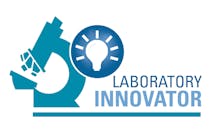Thermo Fisher Scientific and Nuclea join to speed translation of multiplexed methods to quantify type 2 diabetes markers
Scientists at Nuclea Biotechnologies, Inc., and Thermo Fisher Scientific are pooling their expertise to develop novel multiplexed research methods for high-throughput quantification of native insulin and its therapeutic analogs. Monitoring the levels of these markers may be useful in predicting the response to therapy for type 2 diabetes.
Nuclea has extensive experience in developing and commercializing biomarkers and clinical tests. The Thermo Fisher Scientific Biomarker Research Initiatives in Mass Spectrometry (BRIMS) Center has successfully collaborated with numerous leading clinical researchers to apply mass spectrometry (MS) to biomarker discovery and its translation to high-throughput, quantitative methods.
“We’ve already worked with the BRIMS Center to develop two other very important assays,” says Nuclea CEO Patrick Muraca. “These assays have demonstrated the sensitivity, precision, and robustness needed for high-throughput detection of clinically relevant isoforms of target proteins.”
“The real-world application of multiplexed MS-based methods to Type 2 diabetes presents an opportunity to advance research in this crucial area,” says Mary Lopez, director of the BRIMS Center, Thermo Fisher Scientific. “Nuclea’s proven ability to validate and develop routine assays means our collaboration can support research efforts.”
Scientists from Nuclea and the BRIMS Center will develop multiplexed MS-based research methods that Nuclea will use to analyze donor plasma samples from Boston-based diabetes research collaborations. A proprietary platform that combines Thermo Scientific mass spectrometric immunoassay (MSIA) immuno-enrichment technology, TSQ Vantage or Quantiva triple quadrupole mass spectrometers, and Pinpoint Software will be used for the collaborative work. Learn more about the BRIMS Center.
Read more




